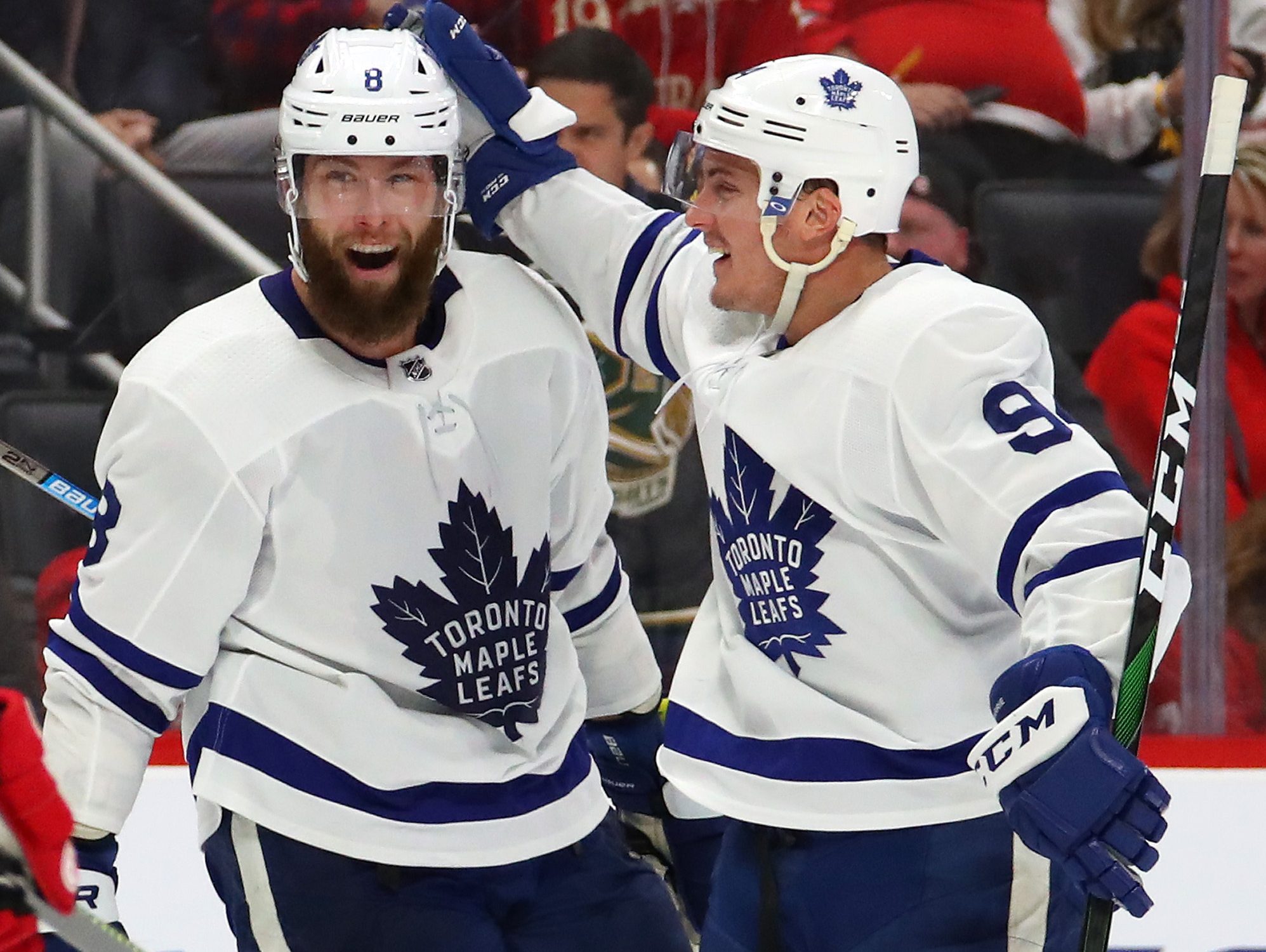The final specifics on the previously reported Jake Muzzin deal are now in: four years, $5.625 million AAV.
Without making any significant additions today, the Leafs were able to go ahead and make this contract official without needing to wait until March 1st when the extra 10% in “tagging” space opens up.
The deal will take Muzzin past his 35th birthday. The details:
- It is front-loaded with around $16.8 million in signing bonuses included. Therefore, it’s lockout and buyout protected, and also designed to be more easily tradeable in the latter years.
- A no-movement clause is in place for 2020-21 that converts to a no-trade clause (10-team no-trade list) in years 2-4. This means the team is not required to protect him in the 2021 expansion draft.
For more on the ins and outs of this contract, check out Anthony Petrielli’s analysis from when the news of this deal first broke.
The biggest storyline today in Toronto will follow Kyle Dubas’ decision not to trade the team’s other notable pending-UFA defenseman, Tyson Barrie.
It has been a tumultuous first 63 games to 2019-20 for Barrie, who did not take to Toronto well initially with the pressure of playing in the market in a contract year, in addition to the somewhat awkward fit on a team that was more in need of a right-handed defenseman capable of handling tough defensive assignments.
Initially, Barrie slotted in next to Jake Muzzin in hopes of rekindling the chemistry shown at the World Championships in 2015, but the pair struggled early and Barrie has been shuffled around next to a multitude of different partners since, including Travis Dermott, Morgan Rielly (prior to his injury), and most recently, rookie Rasmus Sandin.
The initial controversy surrounded Barrie’s exclusion from the top power-play unit under former head coach Mike Babcock, an issue that was raised during a meeting early in the season between Barrie’s agent and Kyle Dubas concerning Barrie’s miserable start (zero goals, five assists, minus-six in 21 games). After he was moved onto the top PP unit in Rielly’s place under Sheldon Keefe, his individual production has rebounded — five goals, 28 points, plus-three in 43 games — but he’s still been on the ice for more goals against than for this season at 5v5 and his expected Goals For share is the worst among Leaf blue line regulars (49%) despite largely being sheltered from tough matchup situations.
In terms of the eye test, Barrie has lacked for confidence and has often been lost — if not non-competitive at times — in the defensive-zone/defending his net, and he has faced criticism for a high volume of empty-calorie shot attempts at the other end of the ice.
Nonetheless, it’s not a trade many expected to happen before the team was blown out three times in a week in the lead up to the deadline. While it has been reported Dubas pulled back on some of the buying options he might have been pursuing after a tumultuous week, it looks like he’s still got enough belief left in this group to find out how it responds down the stretch with the team still technically in a playoff position, with some help coming in the form of returning bodies from injury in the final weeks of the season — including the team’s number one defenseman and Barrie’s defense partner prior to his injury in Morgan Rielly.
There was a growing chorus of calls in the media and fan base for the team to take a realist’s view here on where the club stands in its overall consistency level as well as the incredibly tough path it would have to travel to make it out of the Atlantic Division in the playoffs should they make it. This could’ve been a much different sort of deadline for this team if not for a 5-6-1 month of February that has included a variety of abject defeats; prior to, the Leafs were 18-8-2 under Sheldon Keefe and still had designs on possibly chasing down home-ice in the first round of the playoffs.
It’s noteworthy that the Leafs have just one pick in the first three rounds of the 2020 NHL draft, (their own second-round pick). The loss of the first-round pick in the Patrick Marleau deal leaves the Leafs without a first-round pick two years in a row — and that’s a significant deficit for their draft and development systems to make up for while knowing the team needs to keep its pipeline flowing with cheap, young, capable NHL talent to sustain a proper window of contention.
Without knowing what kind of offers might have been out there for Barrie — and if the first-round pick and prospect package was even offered at any point — the asset management adds up like so:
Note: The Leafs reacquired Calle Rosen for Michael Hutchinson earlier today.
Michael Hutchinson (700k, 2020 UFA), Nazem Kadri ($4.5 million, 2022 UFA), third-round pick in 2020 (moved subsequently in the Jack Campbell trade)
FOR
Alexander Kerfoot ($3.5 million, 2024 UFA), sixth-round pick in 2020, Tyson Barrie ($2.8 million, 2020 UFA)
The situation with a hypothetical Barrie for a first + prospect trade:
Michael Hutchinson (700k, 2020 UFA), Nazem Kadri ($4.5 million, 2022 UFA), third-round pick in 2020 (moved subsequently in the Jack Campbell trade)
FOR
Alexander Kerfoot ($3.5 million, 2024 UFA), a sixth-round pick in 2020, a first-round pick in 2020/21, and a prospect
There is also the argument to be made that — optics of subtracting at the deadline aside — removing Barrie, based on his play this season, may not have been a devastating blow to the team’s odds of making the playoffs anyway. It might have been asking a lot of Timothy Liljegren in the interim, but Cody Ceci has a chance to return before season’s end. The Leafs had also been testing out a five-forward setup on the power play lately, while Morgan Rielly is back on the ice skating.
Dubas clearly felt that moving Barrie to the top bidder — whatever that may have been — without a decent RHD option coming back in the same deal or a subsequent move would have been tantamount to throwing in the towel on a season he’s far from prepared to give up on.


































